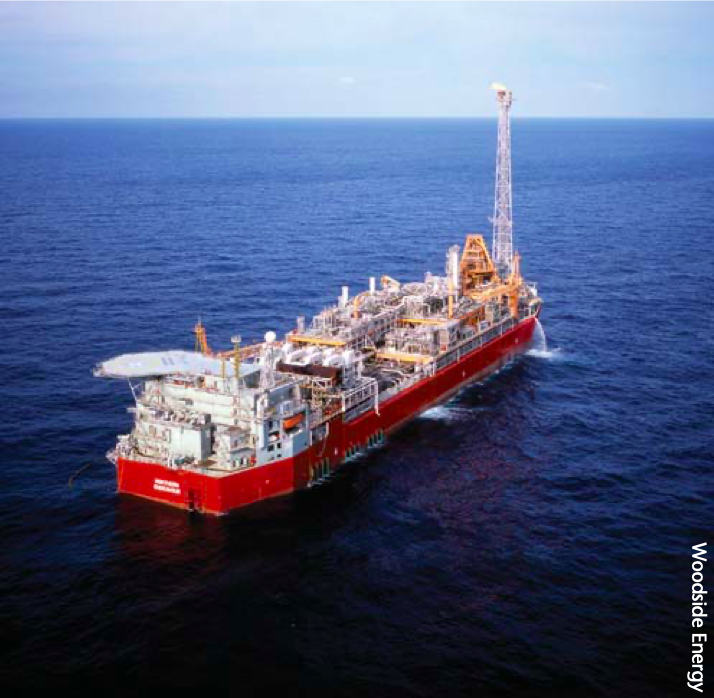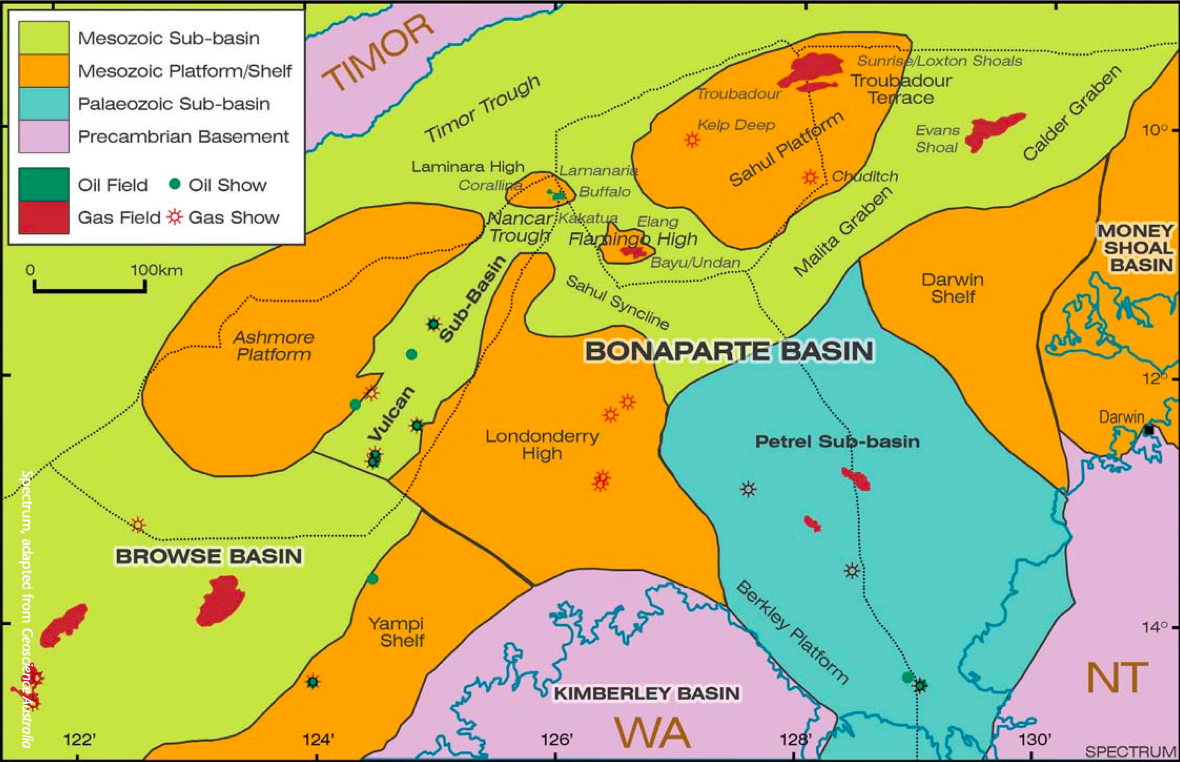Treaty brings fresh enthusiasm
The signing of a boundary dispute treaty between Australia and East Timor in 2005 has resulted in a resurgence in exploration vigour, both in the JPDA as well as in sovereign East Timor territory.
The history of exploration in the northern Bonaparte Basin of Northern Australia and the Joint Petroleum Development Area (JPDA) started back in the late 1960s. Early explorers were quickly rewarded with successes such as the Sunrise and Troubadour gas discoveries in 1974. Gas economics back in the 1970s were unfavourable for the fields to be developed and these gas discoveries quickly faded from the headlines. It was not until the oil discoveries such as Jabiru-Challis in 1983 that the spotlight was put back on the area. In the JPDA, the stimulus from the Jabiru discovery in the Vulcan sub-basin spurred on the exploration effort which resulted in more discoveries in quick succession at Elang, Kakatua, Laminaria and Corallina in 1994 and Bayu-Undan in 1995.
Politically, the uncertainties in the late 1970s through to the 1990s over the international boundary issues between Australia and Timor stymied much of the enthusiasm to explore in the unresolved areas. The signing of the Timor Gap Treaty in 1989 and the establishment of the Zone of Cooperation allowed exploration activity to resume in these areas. The ratification of the Timor Sea Treaty between Australia and East Timor in 2005 finally brought about a certain calm and the area has experienced a fresh resurgence in exploration vigour, both in the JPDA as well as on sovereign East Timor territory.
Developments in the JPDA
Several oil and gas developments have now been completed in the JPDA. The greater “Northern Australia” area now boasts some of the finest innovations in the oil industry, such as Australia’s first subsea and FPSO development at Jabiru and the world’s largest FPSO at Laminaria.

The Bayu-Undan gas/condensate field is wholly within the JPDA. The field was developed in 2003, initially as a condensate stripping project. Later in 2004/05, a platform complex was put in place to produce and supply gas to the Darwin LNG plant at Wickham Point. Gas is piped onshore through a 500 km, 26-inch line. The Darwin LNG plant now produces 3.2 million tons per annum of LNG which is exported to Japan.
With abundant discovered gas resource, this area could soon see multiple FLNG (floating LNG plant) developments taking place. As a development concept, FLNG is ideally suited to the remoteness that characterises this prolific oil and gas province.
The Bonaparte Basin
The Bonaparte Basin has over 15 km of sediments and it can be roughly divided into two principal depocentres; a southern Palaeozoic and a northern Mesozoic depocentre. The majority of the hydrocarbons in the Bonaparte Basin are found in the northern Mesozoic basin. Prior to the Mesozoic extension the Bonaparte Basin underwent two extensional episodes in the Palaeozoic and a compression event in the late Triassic.Significant amounts of gas have been found in the older Palaeozoic reservoirs.

The late Triassic compression resulted in widespread uplift and erosion, which produced inversion structures and anticlines as seen in the Petrel sub-basin. By the early to middle Jurassic, these uplifted areas had succumbed to erosion and collapse, and widespread fluvio-deltaic conditions prevailed in the Northern Australian margin. It was during this period that ‘redbeds’ and fluvio-deltaic clastics were laid down in mega-delta systems. These Jurassic fluvio-deltaic Plover sands are the main reservoirs for some of the large oil and gas fields found in this area.
Licence rounds
The Australian government conducts an annual acreage release for offshore areas within Australian territory. Invitations to bid for the gazetted acreage are announced in the media including public releases on the Geoscience (Government of Australia) website. Bids are evaluated and awarded based the size of the committed work programmes, including wells, 2D and 3D seismic surveys and other geological and geophysical activities.

The Northern Bonaparte Basin, the JPDA and the sovereign territory of East Timor are very well served with excellent seismic coverage of modern multi-client data as well as state-of-the-art reprocessed vintage seismic data. The acquisition of the Perth-based Australia Seismic Brokers (ASB) by Spectrum in April 2010 has enabled this global multi-client seismic services company to assemble a very comprehensive seismic database in this region. The position of the long foldout line on pages 58 – 60 is shown in black. Source: Spectrum.
Within the JPDA, petroleum licences are administered by the Timor Sea Designate Authority (TSDA) a body comprising administrators from Australia and East Timor. In 2005, East Timor awarded five blocks in its first licence round. It is rumoured that the next round is not too far away.




